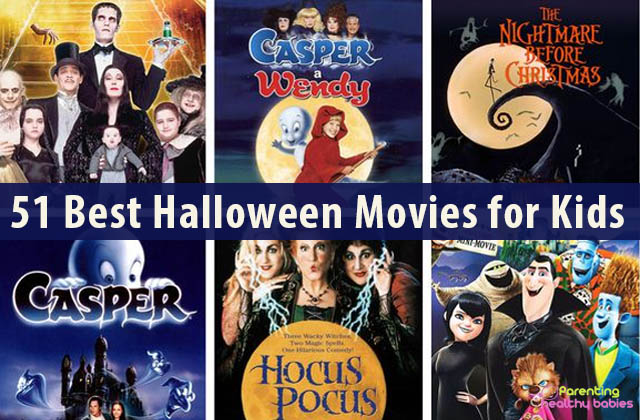Games and fun activities are a vital part of teaching English as a foreign language. Whether you’re teaching adults or children, games can help liven up your lesson and ensure that your students will leave the classroom wanting more. Want to make sure your kids have the most fun while learning a new language? Here are the top 11 games to make sure they do:
11 Best Games for Kids to Learn English
Two truths and a lie
Two truths and a lie is a fun game which is perfect as a kind of ‘getting to know you’ game. It is also a brilliant ice breaker. The game is excellent for practicing speaking skills, though make sure you save a time for after the game to comment on any mistakes students may have made during the game.
How to play:
- Write 3 statements about yourself on the board, two of which should be lies and one which should be true.
- Allow your students to ask you questions about each statement and then guess which one is the truth. You might want to practice your poker face before starting this game!
- Pair the kids up and have them play again, this time with their new partner. If you want to really extend the game and give students even more time to practice their speaking/listening skills, rotate partners every five minutes.
- Bring the whole class back together and have students announce one new thing they learned about another student as a recap.
- If they guess correctly, then they win.
Match The Cards
This game is excellent for testing vocabulary and sentence building. Plus its super fun.
How to play:
- Cut out squares from a chart paper make a few cards.
- Now cut pictures and paste them on the chart paper cards.
- Look for words that describe the pictures that you chose and paste them on the chart paper cards too.
- Shuffle the cards and ask your kids to place the word card and the matching picture card, opposite to each other.
- Let them finish placing all the pictures and words. In case he falters, helps him arrange the correct sequence.
Simon Says
This is an excellent game for young learners. This one is bound to get the kids excited and wanting more. This will test your kids’ comprehension and vocabulary skills to the max.
How to play:
- Stand in front of the class (you are Simon for the duration of this game).
- Do an action and say Simon Says [action]. The students must copy what you do.
- Repeat this process choosing different actions – you can be as silly as you like and the sillier you are the more the children will love you for it.
- Then do an action but this time say only the action and omit ‘Simon Says’. Whoever does the action this time is out and must sit down.
- The winner is the last student standing.
- To make it harder, speed up the actions. Reward children for good behavior by allowing them to play the part of Simon.
Where Shall I Go?
This game is used to test prepositions for movement and should be played after this subject has been taught in the class. This game is so much fun but it can be a little bit dangerous since you’ll have one student in each pair be blindfolded while the other directs them. So make sure to keep your eyes open!
How to play:
- Before the students arrive, turn your classroom into a maze by rearranging it. It’s great if you can do this outside, but otherwise push tables and chairs together and move furniture to make your maze.
- When your students arrive, put them in pairs outside the classroom and blindfold one student from each pair.
- Allow the pairs to enter the maze one at a time; the blindfolded student should be led through the maze by their partner. The students must use directions such as step over, go under, go up, and go down to lead their partner to the end of the maze.
Pictionary
This is another game that works well with any age group; and the children love it because they can get as creative as possible in the classroom
How to play:
- Before the lesson starts, prepare a huge bunch of words and put them in a bag.
- Split the class into teams of 2 and draw a line down the middle of the board.
- Give one team member from each team a pen and ask them to choose a word from the bag.
- Tell the students to draw the word as a picture on the board and encourage their team to guess the word.
- The first team to shout the correct answer gets a point.
- The student who has completed drawing should then nominate someone else to draw for their team.
- Repeat this until all the words are gone – make sure you have enough words that each student gets to draw at least once!
Treasure Hunt
This is a great way of helping your kid understand and interpret the language. You may increase the difficulty level in understanding the clues according to the age of the children playing the game.
How to play:
- You can hide the goodies at various nooks and corners of the house.
- You can start by explaining the first hint to the kids and ask them to follow the trail of hints to reach to the goodies.
The Hot Seat
Hot Seat allows students to build their vocabulary and encourages kids to practice their speaking and listening skills and it can be used for any level of learner.
How to play:
- Split the class into 2 teams
- Elect one person from each team to sit in the Hot Seat, facing the classroom with the board behind them.
- Write a word on the board. One of the team members of the student in the hot seat must help the student guess the word by describing it. They have a limited amount of time and cannot say, spell or draw the word.
- Continue until each team member has described a word to the student in the Hot Seat.
The Amazing Race
The Amazing Race is a fun game that can be used to revise vocabulary. It can also be used at the start of the class to get kids all warmed up and active. It is a great way of testing what your kids already know about the subject you’re about to teach.
How to play:
- Split the class into two teams and give each team a colored marker.
- Draw a line down the middle of the board and write a topic at the top.
- The students must then write as many words as you require related to the topic in the form of a relay race.
- Each team wins one point for each correct word. Any words that are unreadable or misspelled are not counted.
Find It! Catch It! Throw It! Jump on It!
This card game is very flexible to whatever content you’d like to practice. For example, to learn letters/sounds/printed words, you could use flashcards with the target letters or words. Picture cards are clearly better for younger kids.
How to play:
- You can use ready-made cards, or make your own, and stick pictures of the subject.
If you are using a single set of cards for the whole class, students could also compete individually or in pairs/groups with the following ideas:
- Find: Place/stick cards on the board and ask students to race to find a particular card. Winning students could have a turn at calling what to find next.
- Catch: Have the children standing in a line at the back of the room as you throw/flick cards for them to catch and then identify. (You need to be confident that you can control the safety of the students so no one gets a card in their eye nor bumps their head with another while trying to retrieve cards!)
- Throw: Students pick a card from a pile, identify it and then throw it at/into a target (the door, a bin, etc.). If using disposable cards, they could crumple it to throw it.
- Jump: Spread cards out on the floor in an open area, and students attempt to step/jump onto a card as identified by you or them. The cards could be in a sequence like stepping stones.
Charades With Words
Miming is an excellent way for students to practice their tenses and their verbs.
How to play:
- Before the class, write out some actions – like washing the dishes – and put them in a bag.
- Split the class into two teams.
- Bring one student from each team to the front of the class and one of them choose an action from the bag.
- Have both students mime the action to their team.
- The first team to shout the correct answer wins a point.
- Repeat this until all students have mimed at least one action.
Word Marathon
This is a very interesting game for teaching vocabulary to your child. Here you can test your kid’s vocabulary and spelling.
How to play:
- Give a sheet of paper and a pencil for every child.
- Say a random letter and ask them to jot down as many words from that letter on a sheet of paper.
- The game can be made more interesting by keeping a time limit and asking the kids to write words with the same letter but in different categories, for example, name, place, animal and thing with the same letter.
- The child who writes maximum correct words will be the winner.
These games will keep your students engaged and happy as they learn! These games are designed to be as educational as they are challenging, so make sure you have fun and work on a variety of topics to get your kids comfortable in speaking a foreign language.
Sources:
- https://www.goabroad.com/articles/teach-abroad/esl-games-for-kids
- https://www.gooverseas.com/blog/10-best-games-esl-teachers
- https://parenting.firstcry.com/articles/10-best-games-for-kids-to-learn-english/













